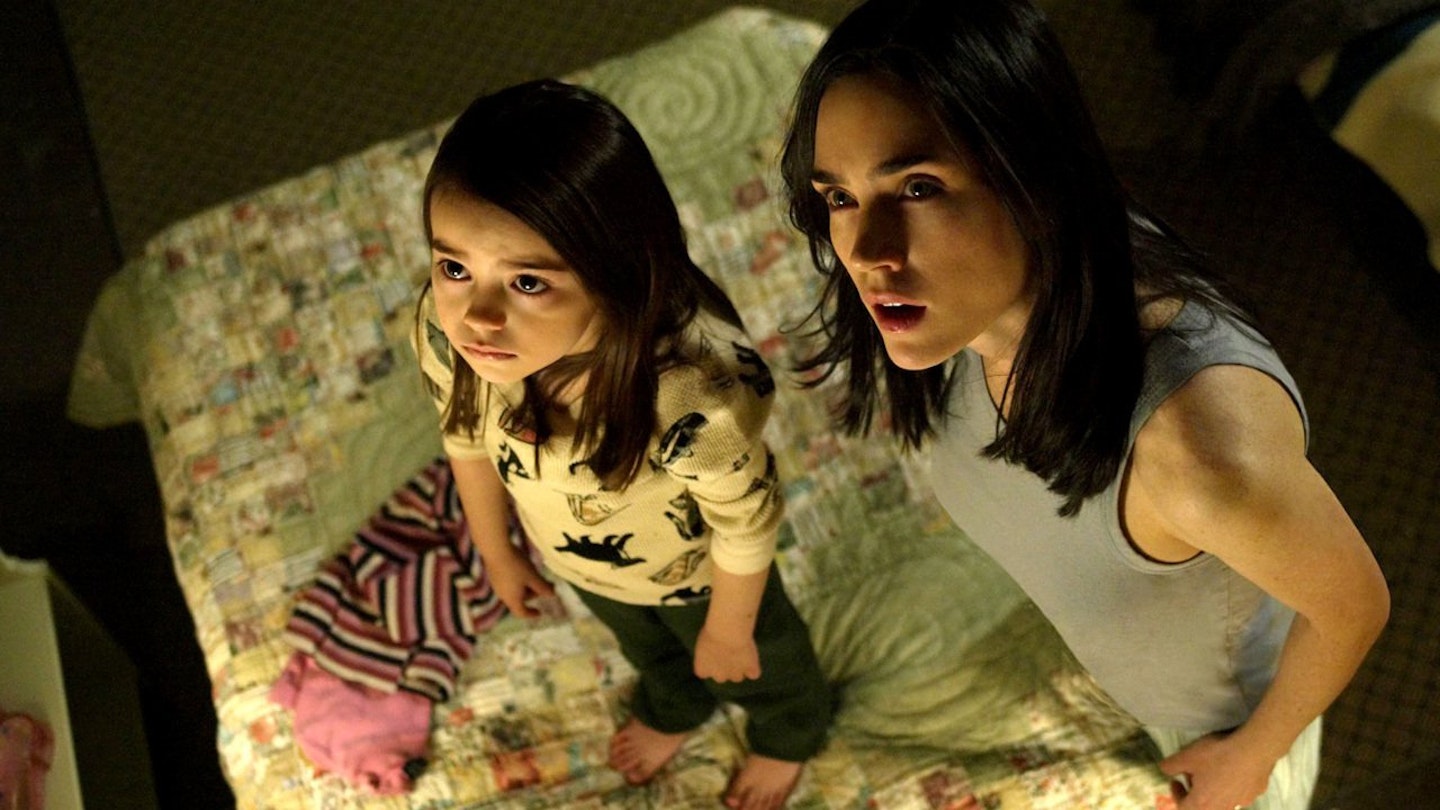While still working his icy chills in his homeland of Japan — he’s now installed in Hollywood remaking his own work — Hideo Nakata directed a series of effective, idiosyncratic ghostly tales that positioned the horror genre away from the glare of schlock. His notion of fear is a slow creep, a stain on the ceiling, the blur of a video image, the insidious tremor caused by a momentary image of a small Japanese child with lank hair and dead eyes. In this style, his most famous films, Ring and Ring 2, might as well have been squealing up Elm Street way compared to the subtle strains of this ghost story that uses reticence, a flat refusal to fully expose its evil schemes, to invoke a very redolent fear.
Thus you have one of the slowest, and often most infuriating, horror movies ever made. Dark Water, as its names suggests, works most of its dread through the expanding image of an iron-brown water stain, and the unending drip-dripping of its torment. The ethereal backstory here tells of a missing girl (a staple of Japanese horror) in ghost form haunting the scene of her downfall in search of a new mother, and Yoshimi, with her own child, fits the bill. In the meantime she’ll ‘make friends’ with little Ikuko.
Nakata, however, keeps the supernatural shards of his story at one remove, allowing them to glimmer sullenly in the background — repeated glimpses of this spooky kid — building a small soap opera in the foreground. We learn Yoshimi (played with dancing nerves by Hitomi Kuroki) has escaped from a brutal marriage, leaving her frayed and open to suggestion; one being that her paranoia over this strange vision of a girl is being manipulated by her ex-husband aiming to regain custody of their daughter. The film, at this stage, never fully commits to the outright alien, allowing Nakata to insinuate it could all in her head, the mucky glower of that stain representing the state of her mind.
Things do tip finally in the direction of genuine weirdness, if not toward an ending that will wholly explains itself, but the impression lasts, proving that oft-regaled saw in horror parts that less is so often more. Especially when it comes to the itchy terror of pre-pubescent Japanese children.

